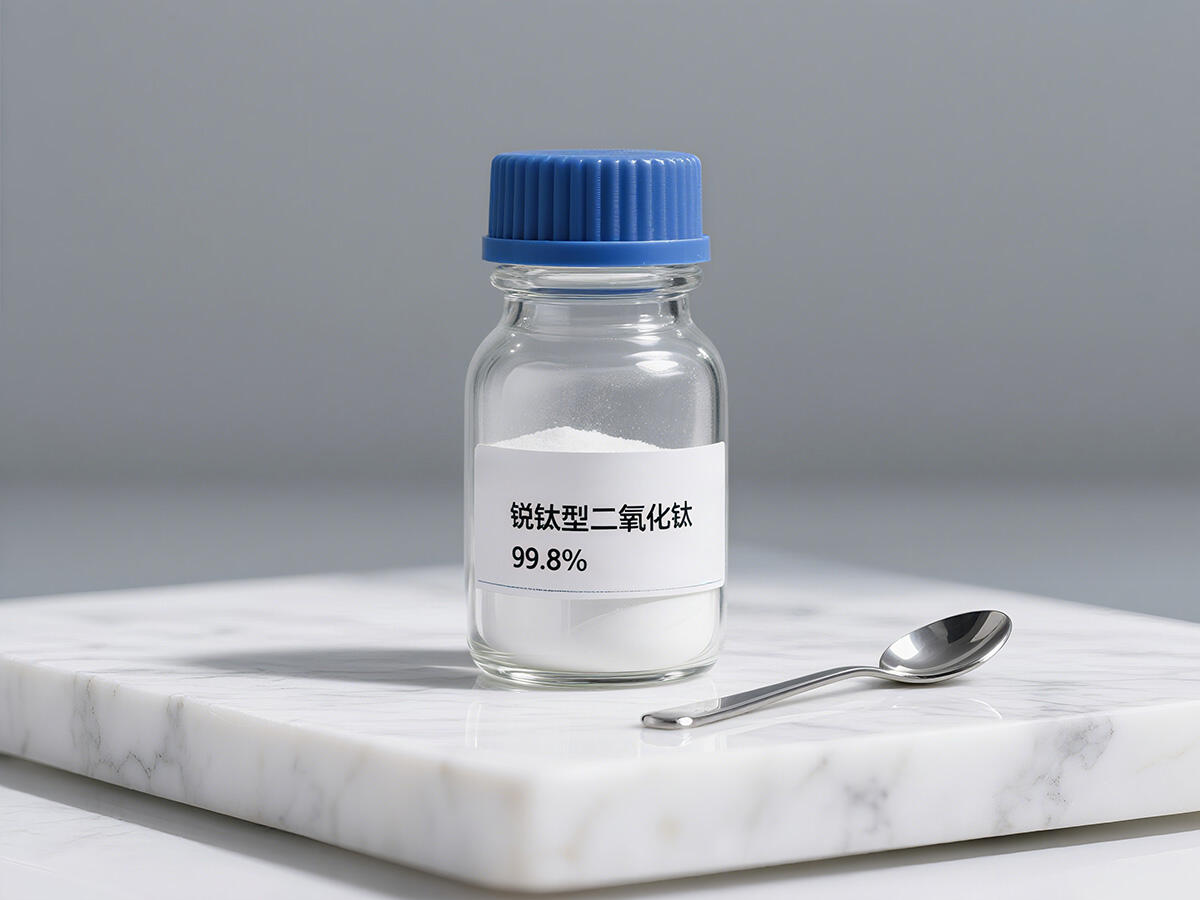In the world of advanced materials, Anatase Titanium Dioxide (TiO2) is redefining photocatalytic technology, and that’s driving the development of smarter self-cleaning surfaces. Here, we look into how TiO2 works, what sets it apart, and how it is changing multiple industries from construction to consumer goods.
What is Anatase Titanium Dioxide?
Anatase is one of three crystal structures that titanium dioxide forms, and the other forms—rutile and brookite—don’t match its photocatalytic properties. What gives anatase the edge is its ability to create self-cleaning surfaces. Under ultraviolet (UV) light, anatase TiO2 generates reactive oxygen species (ROS), natural molecules that rapidly decompose dirt. That ability is why it’s used in self-cleaning glass, textiles, and HVAC filtration units.
How Photocatalysis Works
The photocatalysis cycle kicks off when anatase TiO2 absorbs UV light. The material gets excited and sends free electrons into the conduction band. These high-energy electrons then react with water and oxygen in the air to produce hydroxyl radicals and superoxide ions, which swiftly attack and break apart dirt, bacteria, and even odors. The self-cleaning effect is boosted when the TiO2 coating is porous to gather more light, when UV intensity rises, and when humidity levels help supply extra water molecules.
Applications of Self-Cleaning Technology
Anatase TiO2 isn’t just for labs anymore; it’s busy reshaping everyday spaces. In construction, the substance gets sprayed on building surfaces, losing the grime even the best janitor couldn’t budge, saving cash on scissor lifts and scaffolds. Cars, with their sleek lines, get a TiO2 paint job that’s like a bodyguard for dirt—keeps the shine longer with less wax and less work. And hospitals are on board, too. Copies of this coating line surgical trays and visitor handles, zapping germs with the press of an invisible sunlight button and creating a brighter, safer aisle for everybody.
Environmental Benefits of Photocatalytic Self-Cleaning
The eco-story of anatase TiO2 reads like a marketing dream that’s actually real. Sunlight is the only on-off switch it needs, so it sidesteps the toxic, room-fogging cleaners that usually get told “spray, rinse, repeat.” When it’s busy evaporating grime, the coating is also dismantling airborne nasty bits and turning murky water into a clearer, lymph-like mirror of itself. Cities and start-ups are waking up, realizing a green badge isn’t just a feel-good sticker anymore—TiO2 is the cheat code. Expect factories and fancy hotels to start slapping this stuff on every polished edge, because the planet could use another neon “we’ve got this” symbol.
Future Trends in Photocatalytic Technology
Ongoing research is pushing the limits of anatase TiO2 in photocatalytic applications, and the outlook is bright. Researchers are experimenting with new ways to structure nano-TiO2 and to create composites that significantly boost photocatalytic performance. Pairing TiO2 with other advanced materials could yield surfaces that not only clean themselves but also offer added benefits, like killing germs and blocking harmful UV rays. These breakthroughs promise to make self-cleaning surfaces faster to produce and easier to use in daily settings like homes, schools, and public spaces.
In summary, anatase titanium dioxide remains the leading candidate in photocatalytic self-cleaning technology due to its strong performance and low environmental and cost impact. As businesses and manufacturers incorporate these advanced materials into their products, we can expect cleaner, healthier, and greener indoor and outdoor environments becoming the everyday reality.


